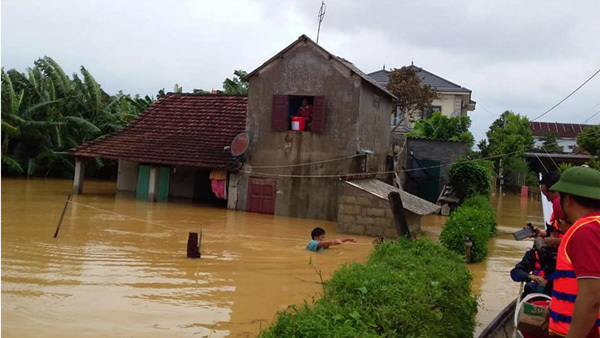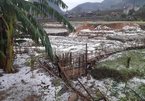according to the International Federation of Red Cross and the Red Crescent Societies (IFRC).
 |
| Relief workers attempting to provide supplies to a flooded area. (Image Credit: Twitter/UNOCHA) |
The work was getting underway this week with “event definition” – the precise setting of the parameters in space and time of the rainfall episode being studied and the data associated with it.
The scientists’ conclusions on the extent to which human-induced climate change has had a hand in the latest extreme-weather event to hit Vietnam are expected in about a month.
Earlier studies of extreme rainfall by the WWA group included, last year, Tropical Storm Imelda in Texas, extreme seasonal rainfall in Japan and the Indian state of Kerala in 2018, and the 2017 floods in Bangladesh.
The IFRC appeal text says the Hieu, Bo, Gianh and Kien Giang rivers all “reached historically high levels, and in some locations floodwaters exceeded the previous historical highs recorded in 1979 or 1999”.
Typhoon Molave was the most recent storm to make landfall in central Viet Nam last week, the ninth this year, and it followed weeks of torrential rain and landslides.
It’s estimated now that at least 150,000 people are at immediate risk of food shortages, with thousands of hectares of crops destroyed and more than 2 million cattle and poultry swept away.
The IFRC has launched an emergency appeal for nearly CHF 4 million (US$ 4.4 million) for relief and recovery for 160,000 Vietnamese people, on top of a DREF grant of CHF 500,000 to support local emergency efforts. VGP
Kim Anh

Vietnam ready to cope with extreme weather
Nguyen Xuan Cuong, Minister of Agriculture and Rural Development, spoke on the country’s readiness to minimise losses in the event of natural disasters.

Combination of factors causes extreme weather: experts
A combination of bad factors, plus cold air mass and convergence of winds at a height of 5,000 meters, have caused extreme weather phenomena, including large hail and the 50-year historic cold spell on April 22-23.